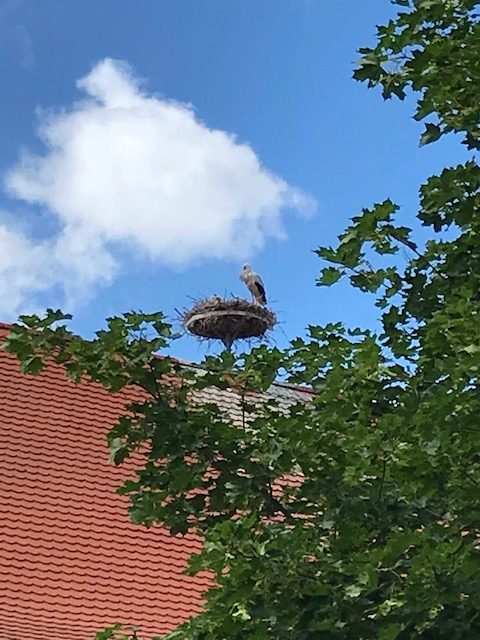-

When my mother was a little girl living in Stockstadt, Germany in the 1930s, storks made their large nest in the bell tower of the old Rathaus. My mother remembers that she could recognize each bird and she would name them. When the weather turned cold, the birds would migrate to Africa to have their own babies. Every spring, she would wait for her “friends” to return. On the first trip my mother and I took to Stockstadt in 1991 — 52 years after she fled her home town in 1938 — the first thing she wanted to see was the storks. Sadly, we learned that the Germans had removed the nest when the old Rathaus was torn down in the late 1950s. The Germans didn’t want the noisy, dirty birds roosting in town. For several years, the storks returned, circling the new building and looking to rebuild their nest. But after several fruitless and frustrating visits, the birds gave up. In Motherland, my mother, who deeply identified with the birds, said, “They got rid of the birds the way they got rid of me.”
Today, a German friend sent me this photograph.”Yesterday, I was in Stockstadt,” he wrote, “and the storks have returned
Posted in News
